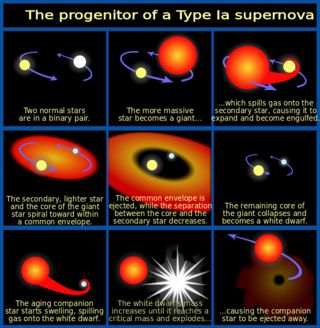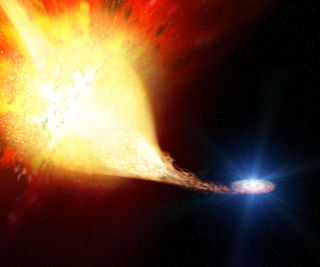Environment
Did Cosmic Explosions Prompt Our Ancestors to Walk Upright?
Supernova explosions eons ago may be linked to bipedalism in surprising ways.
Posted May 31, 2019

Supernova explosions in outer space millions of years ago may have triggered a chain reaction that burned Earth's forests and prompted our ancient human ancestors to go from tree-dwelling habitats to walking upright, according to a new paper by researchers from the University of Kansas. This paper, "From Cosmic Explosions to Terrestrial Fires?" was published May 28 in the Journal of Geology.
The lead author of this new paper is Adrian Melott, professor emeritus of physics and astronomy at the University of Kansas. His co-author, Brian Thomas, is a professor in the Department of Physics and Astronomy at Washburn University in Topeka, Kansas.
About 2.6 million years ago, Earth was bombarded with the ripple effects of an abundance of relatively near supernovae explosions that resulted in galactic "cosmic-ray ionization" of the atmosphere. The new theory on the possible origin of Homos sapiens bipedalism by Melott and Thomas builds on previous research to argue that these cosmic explosions sent a cascade of electrons into Earth's atmosphere that resulted in atmospheric ionization and more frequent cloud-to-ground lightning strikes.
Theoretically, this surge in lightning strikes resulted in more wildfire infernos around the globe. In their new paper, Melott and Thomas write: "The wildfires would have contributed to the transition from forest to savanna in northeast Africa, long argued to have been a factor in the evolution of hominin bipedalism."
In a statement, Melott said:
"It is thought there was already some tendency for hominins to walk on two legs, even before this event. But they were mainly adapted for climbing around in trees. After this conversion to savanna, they would much more often have to walk from one tree to another across the grassland, and so they become better at walking upright. They could see over the tops of grass and watch for predators. It's thought this conversion to savanna contributed to bipedalism as it became more and more dominant in human ancestors."
The KU researcher note that the upsurge in wildfires millions of years ago is supported by the discovery of carbon deposits found in sea beds and soils around the world that correspond with the timing of this so-called "cosmic-ray bombardment."
Will we be bombarded with cosmic-ray ionization again sometime soon? No. Melott said that we are unlikely to experience this type of supernovae event any time soon. The nearest star to our planet that is capable of becoming a supernova in the next million years, Betelgeuse, is about 652 light years away from Earth.
Author's note: I hope you enjoyed learning about this new "cosmic" bipedalism hypothesis. As a science-based blogger, I have some healthy skepticism about theorizing that supernova explosions millions of years ago might explain why humans walk upright on two feet. That said, it's easy to visualize this sci-fi theory with CGI special effects at every step of the supernova-to-wildfire chain reaction.

In my opinion, this hypothesis is really out there. However, this bipedalism concept sparks my imagination, which is exactly why I find it fascinating. As a science reporter, I read dozens of new studies every day that present evidence-based research in a way that can make one's eyes glaze over with boredom. The ideas in the new paper (Melott & Thomas, 2019) may be far-fetched to some, but this food for thought isn't blasé. And, after all, they may be right.
As a journalist, I don't promote quackery or report on dubious research. Therefore, I want to make it very clear that this new theory of forest fires caused by supernovae explosions millions of years ago being one reason that our ancestors developed bipedalism as a way to adapt to living on the savannas in northeast Africa involves a certain amount of conjecture. Nevertheless, I think this is an intriguing hypothesis and offers a fresh perspective on extraterrestrial factors that may have influenced our Earthling evolution.
References
Adrian L. Melott and Brian C. Thomas. "From Cosmic Explosions to Terrestrial Fires?" The Journal of Geology (First published: May 28, 2019) DOI: 10.1086/703418


